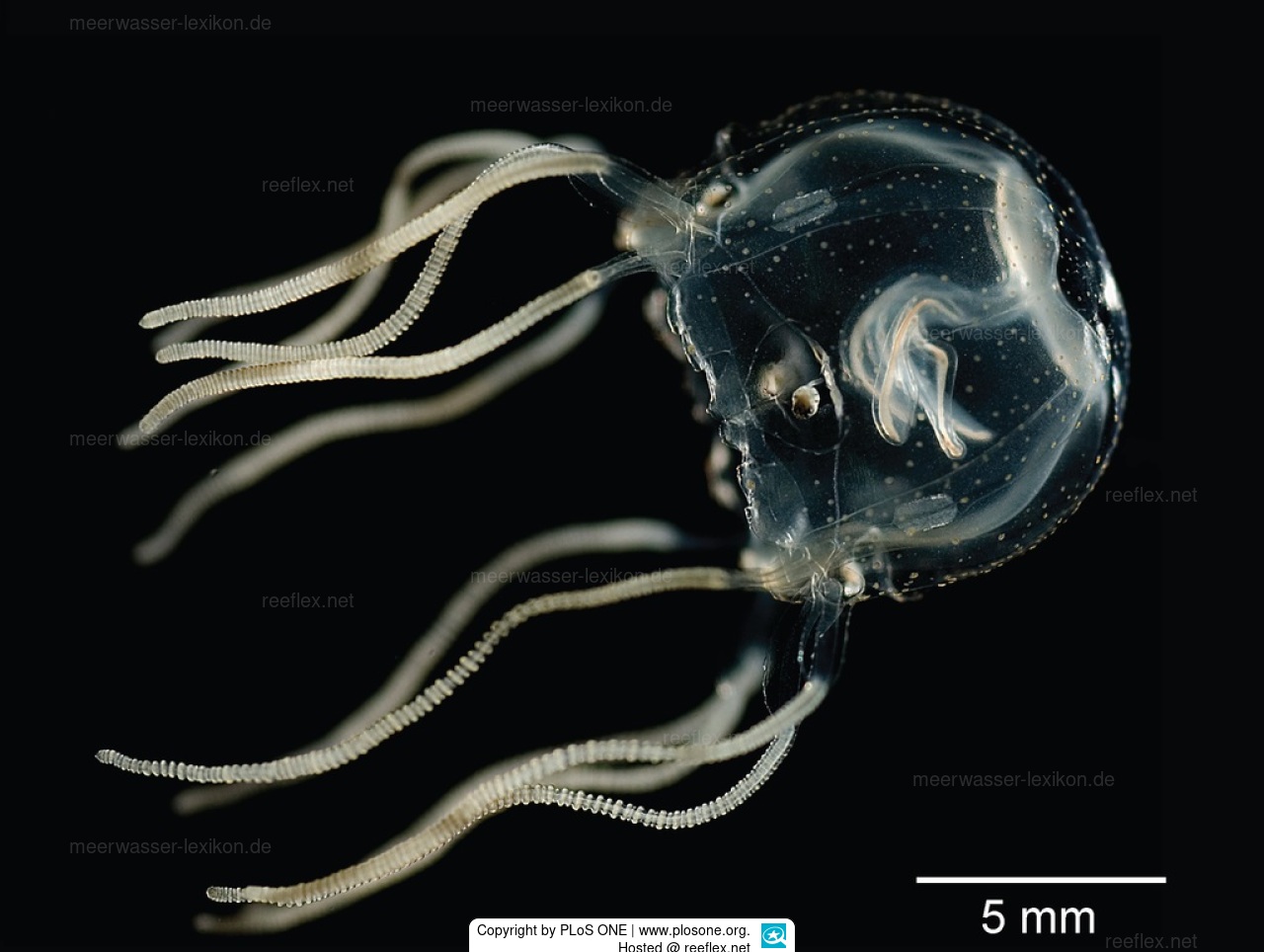Info
Im Gegensatz zur den hochgiftigen bzw. tödlichen Irukandji-Quallen (Carukia barnesi und Malo kingi sollen die Stiche der Nesselkzellen von Tripedalia cystophora lediglich ein leichtes Picksen durch milde Stiche in der Haut verursachen, allergische Reaktionen wurden bisher noch nicht dokumentiert.
Da die Empfindlichkeit der Haut von Mensch zu Mensch aber unterschiedlich ist, können weitergehende Hautreaktionen nicht grundsätzlich ausgeschlossen werden.
Da es aber weitere kleine Würfelkorallen gibt, die das Irukandji-Syndrom auslösen können, z.B. Alatina mordens und Alatina moser, stellt sich für Badegäste in den betroffenen Regionen die grundsätzliche Frage, wie man sich schützen soll, wer ist schon in der Lage die kleinen Quallen einwandfrei in Bezug auf giftig, hochgiftig, tödlich oder harmlos zu unterscheiden zu können?
Unsere Empfehlung für Gewässer, in denen die genannten Arten vorkommen: Ganzkörperanzug und Schutzhandschuhe benutzen!
Tripedalia cystophora trägt auch den Namen "Mangroven-Würfelqualle", was auf ihr bevorzugtes Habitat hinweist.
Mangroven gehören zu den Kinderstuben vieler Meereslebewesen und stellen ein ideales Biotop für die kleine Würfelqualle dar.
Mit ihren Nesselzellen fängt und tötet die Qualle ihre potentiellen Beutetiere, hauptsächlich kleinste Krustentiere wie Copepoden.
Zu den milden Stichen von Tripedalia cystophora kann hier nachgelesen werden.
https://repository.si.edu/bitstream/handle/10088/29298/Lasley-etal_2016_PBSW-Tripedalia%20in%20GoM.pdf?sequence=1







 PLoS ONE | www.plosone.org
PLoS ONE | www.plosone.org



